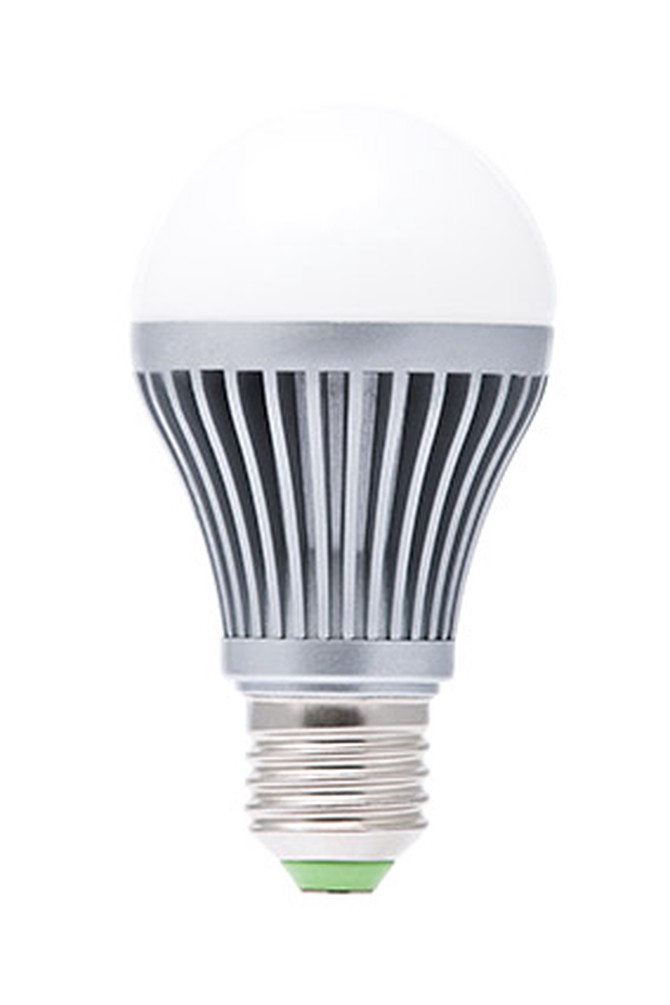5 Things to Cut Out of Any Monthly Budget
Whether you want to go big (hello, high housing bills) or small (that protein bar habit), these easy changes will keep money in your wallet.
By Lynn Andriani

Photo: Thinkstock
Your Huge Mortgage Payments
It's one thing to read that rates are at a record low, but it's another to actually run the numbers and realize how much money refinancing could save you. Though average rates on fixed mortgages recently jumped to their highest levels in a year, they're still near historic lows. Depending on your current rate, a re-fi could bring your monthly payment down by anywhere from $60 to $175 (or significantly more). Don't worry about trying to pay off the entire loan, though: Carmen Wong Ulrich, the president and co-founder of ALTA Wealth Management, says a mortgage is one debt you shouldn't be in a rush to pay off.

Photo: Thinkstock
Those Energy-Sucking Lightbulbs
We've been hearing great things lately about light-emitting diode (LED) bulbs and how they're a much greener choice than incandescent: They use less energy and don't emit as much heat or impact the environment as heavily once you discard them. As this recent New York Times article explains, if you install one today, you may not even live long enough to see it burn out. But there's a reason for penny pinchers to rejoice, too: These bulbs are one of the simplest ways to cut your electricity bill. The average lifespan of an LED bulb is 50,000 hours (versus 1,200 hours for incandescent) and they use only six to eight watts (compared to 60 watts). The best part: it will cost you $33 to run an LED light for a year—and if you wanted the same amount of light from incandescent bulbs, you'd spend $329.

Photo: Thinkstock
The $20 Downward Dog
A $55-a-month gym membership or $20 weekly yoga class is often the first thing to go when you're trying to trim expenses. But donation-based yoga studios are becoming increasingly popular, and not just in New York and Los Angeles. Here's just a sampling of centers around the country that have a suggested donation of $10 or are simply pay-what-you-wish: Be Yoga in Austin, Tex.; Yoga Sol in Minneapolis; Yoga District in Washington, DC; Lawrence Yoga Collective in Boston; and Moonlit Yoga in Portland, Ore.

Photo: Thinkstock
Your Pricey Commute
Even if you're taking public transportation to work and using your employer's transit benefit program, you're probably spending more than you want to on getting to and from your desk every day (in very large urban areas, the average commuter spends $16 round-trip daily). Eco- and wallet-friendly ride shares are popping up around the country; while their rules vary from very formal to quite loose, you could cut your commuting costs by 30 to 60 percent by using one. The new app RideScout is a helpful tool: Enter the details of where you are and where you're going, and it will present you with various options, allowing you to compare them by duration and price. Or, tell your employer about another brand new app, TwoGo, which matches employees into carpools automatically, according to their preferences.

Photo: Thinkstock
That 4:00 Meal
Energy bars (aka breakfast/cereal/granola/nutrition/protein bars) are more popular than ever—the $5.7 billion "food bar" industry has seen double-digit growth recently—and it's easy to see why: The grab-and-go snacks are a good way to control portions, and they taste good, especially in the witching hours between lunch and dinner. Each bar can cost as much as $4, though, which quickly adds up when you're eating one every afternoon. If you simply must have your fix, buy them in bulk (e.g., a box of 12 Kind bars runs about $23, so each one costs less than $2)—and put only one in your bag at a time.
Next: 5 ways to save money the next time you eat out
Next: 5 ways to save money the next time you eat out
Published 05/25/2013

